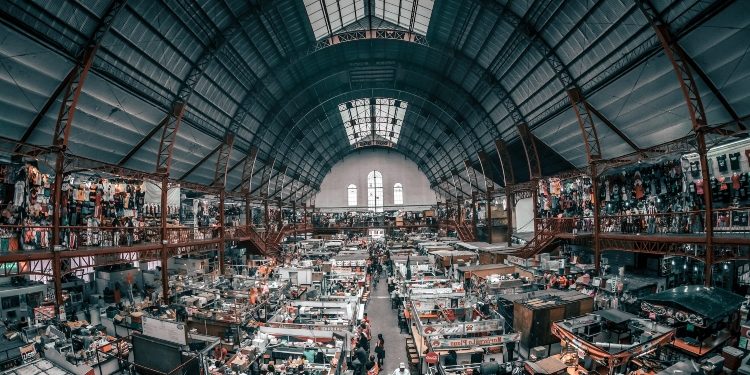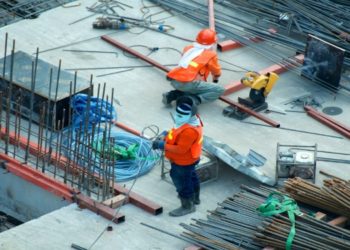Line balancing is a technique that can be used to increase the efficiency of your production process. By optimizing the flow of products through your factory, line balancing can help you produce more goods in less time and with minimal waste. In this blog post, we’ll explore what line balancing is and why it’s important for manufacturers to optimize their operations. Then, we’ll discuss how software can be used to streamline line balancing efforts—so read on if you’re interested in learning how to achieve seamless operations!
What is Line Balancing?
Line balancing is a tool used to improve efficiency, maximize production capacity and improve quality and throughput. It’s an important part of lean manufacturing that helps you achieve seamless operations by ensuring the flow of material on your assembly line is balanced.
Line balancing can be applied at any stage in your process: from initial setup through continuous improvement activities like kaizen events or 5S programs. The overarching goal is always the same–to increase throughput while reducing waste (scrap) along with cycle time so that you’re able to meet customer demand more quickly than ever before!
How Does Line Balancing Improve Efficiency?
Line balancing improves efficiency by increasing throughput, reducing setup times and minimizing the amount of time it takes to make a change in the production line.
Line balancing is an approach used to reduce waste and increase productivity by balancing workloads across multiple machines or operators. It’s also known as work cell design or one-piece flow manufacturing because it allows you to maximize your throughput while minimizing waste by eliminating bottlenecks and other inefficiencies throughout your operation.
Moreover, integrating advanced technologies such as a Computer Vision Camera can help improve this process even further. These camera can provide precise monitoring and data analysis, thus making sure that workloads are evenly distributed and any potential issues are quickly identified and taken care of. This can help optimizing the production line, leading to even greater efficiency and productivity.
In addition to improving overall efficiency, line balancing enables you:
- To reduce setup times for each part or product;
- To eliminate unnecessary steps;
- To have multiple parts moving through different machines at once (this maximizes capacity);
- To reduce the amount of time it takes to make a change in production;
- To increase productivity by allowing operators to focus on one part at a time rather than having them do multiple steps at once.
Line balancing helps companies reduce waste by eliminating unnecessary steps and increasing your throughput while minimizing the amount of time it takes to make a change in production.
Why Is It Important to Optimize Production Flow?
The benefits of line balancing are numerous. Line balancing can help you:
-
- Improve efficiency and productivity. Balance lines allow you to maximize the efficiency of your equipment by reducing unnecessary downtime and improving throughput.
- Increase quality control. Because a balanced line will produce fewer defects, it’s easier to catch them before they leave your facility or get shipped out to customers. This means less waste and higher customer satisfaction rates!
- Reduce costs related to maintenance and materials handling costs (e.g., forklifts). If you’re using a lot of energy for production purposes, line balancing may also help reduce your electric bill since less energy is wasted as heat during idle times between batches on each machine station in a balanced line setup than would otherwise be required if those stations were operating independently of one another instead of in a coordinated production line setup. Line balancing is also important for maximizing your facility’s capacity and preventing bottlenecks from occurring.
How Will Line Balancing Improve the Quality of Your Products?
Achieving seamless operations is about more than just getting your machines to run faster. It’s about making sure every part of the process is done correctly and consistently, so that you can deliver high-quality products every time. Line balancing can help you do this by:
-
- Identifying and fixing problems in your process. With line balancing, you’ll be able to notice small issues before they become big ones; this will allow you to fix them before they impact quality or efficiency.
- Ensuring consistency across your entire operation–so when customers receive their orders, they know exactly what they’ll get every time!
Providing insight into how to improve your process. With line balancing, you’ll be able to identify areas where there are opportunities for improvement–and then put those ideas into practice!
Utilize Line Balancing Software to Improve Efficiency
Production line balancing and V-Curve software can help you identify the most efficient way to balance your lines. This will enable you to reduce costs and improve quality, while also increasing throughput. Line balancing is an important part of any manufacturing process because it ensures that each step in production has enough resources available at all times. If there are bottlenecks or inefficiencies, then it’s likely that some steps will be delayed or even stopped completely until those problems are resolved by adding more machines or workers to handle them more efficiently.
Balancing your lines also helps reduce waste by ensuring that each step in production is working as efficiently as possible. If there are bottlenecks or inefficiencies, then it’s likely that some steps will be delayed or even stopped completely until those problems are resolved by adding more machines or workers to handle them more efficiently.
With Line Balancing, You Can Streamline Operations and Get the Most Out of Your Production Resources
Line balancing is a process that helps you optimize your production resources. It helps you achieve better efficiency, quality and cost savings by enabling you to get the most out of your production equipment.
Line balancing can be done manually or with software. The goal in line balancing is to assign tasks (jobs) evenly among all available machines so that there are no idle machines or bottlenecks in the line. This ensures smooth flow through all stages of production while maximizing output at each stage without wasting time waiting for equipment queues or bottleneck points where materials accumulate before being processed further down their path through your factory floor plan layout design.
Conclusion
With the right equipment and processes, you can make your production lines more efficient, reduce waste and increase profitability. Line balancing is a great place to start because it improves productivity by eliminating bottlenecks in the process. In addition, it helps reduce scrap rates because every part that goes down the line has been properly prepared before entering production so there are fewer defects. Finally, line balancing allows companies to expand their capacity without having to invest in new equipment or new facilities because they can use existing resources more efficiently.
David Prior
David Prior is the editor of Today News, responsible for the overall editorial strategy. He is an NCTJ-qualified journalist with over 20 years’ experience, and is also editor of the award-winning hyperlocal news title Altrincham Today. His LinkedIn profile is here.













































































